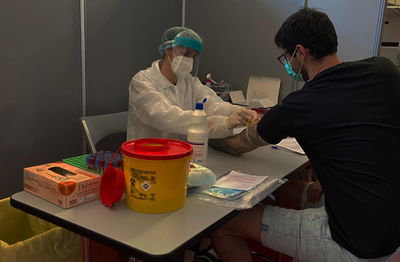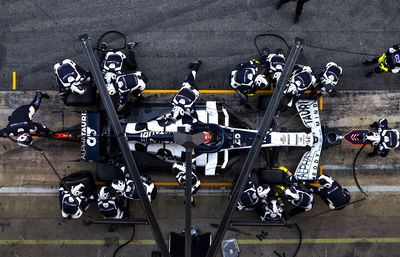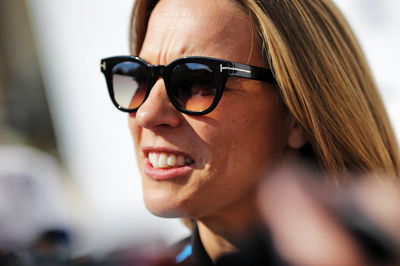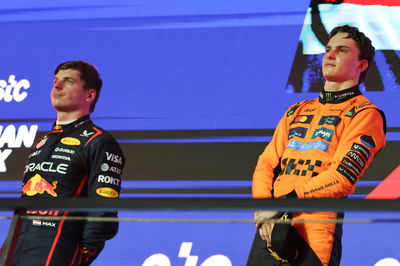How will F1 teams ensure they return to work safely?
Formula 1 teams have reopened their factories and are returning to work this week, albeit in a very different manner as they adjust to new realities amid the COVID-19 pandemic.
With just over one month to go before the heavily-delayed 2020 season gets underway at the Austrian Grand Prix on July 5, F1 teams are beginning to open the doors to their factories following a mandatory 63-day shutdown period.

Formula 1 teams have reopened their factories and are returning to work this week, albeit in a very different manner as they adjust to new realities amid the COVID-19 pandemic.
With just over one month to go before the heavily-delayed 2020 season gets underway at the Austrian Grand Prix on July 5, F1 teams are beginning to open the doors to their factories following a mandatory 63-day shutdown period.
World champions Mercedes have resumed work at their Brackley headquarters, while many staff from Red Bull and Renault also returned to their respective UK bases in Milton Keynes and Enstone on Monday after an enforced two-month break.
Ferrari and Renault restarted work at their power unit divisions two weeks ago, with the likes of Haas and Racing Point returning last week. AlphaTauri, McLaren and Williams have also resumed work at their respective F1 bases.
But the ways of working have changed due to strict tests and social distancing measures put in place to ensure there is no outbreak of coronavirus within the factory environment.
Teams have encouraged personnel who are able to work from home to continue doing so in order to limit the amount of staff on site at factories.
AlphaTauri reopened the doors to its Faenza factory again on Monday for the first time since March 23 and has clearly outlined its measures for staff returning to work.
All personnel returning to work have to undergo a serology test at the factory under medical supervision away from the main building, with a positive result determining that the person must observe a 14 days of quarantine as per the health regulations. Those who are negative can return immediately.
Temperature checks also need to be carried out at home prior to arriving at the office, with further control measures at the factory entrance thanks to the installation of advanced thermo scanners connected to the clocking-in machines. Anyone showing signs of fever must stay away.
The return of office staff is being carried out on a gradual basis, with a rotation system put in place to have some personnel working from home and others in the office on alternate weeks.
Shifts have been differentiated to ensure social distancing can occur safely, while a limit on how many people can be in the building at one time has also been enforced.
Designated doors and stairways have been assigned to staff to minimise cross-contamination from different groups of staff.
The use of face masks is mandatory for office-workers, with hand sanitising gel available at stations located at entrances to and within offices. Offices are being constantly sanitised and desks have been reorganised to comply with the social distancing policies.

At its sister Red Bull senior team, similar measures are being put in place to ensure a safe restart for its employees.
“We are very fortunate that we are on a big site in Milton Keynes with lots of space so that we can spread people out and follow strict social distancing guidelines,” team principal Christian Horner told the team’s website.
“The health and wellbeing of our staff is of paramount importance to us, so we have taken all the necessary measures so they can come back to a safe environment.
“Our workforce are our biggest asset and we want to ensure they feel comfortable, they are safe and being looked after.”
And when racing restarts with a congested European leg consisting of eight races in 63 days, even more precautions will need to be taken to comply with the ‘biosphere’ environment F1 plans to create.
All of the races will take place behind closed doors without fans, and teams will be limited to an “essential” amount of personnel for each race. Guests or partners will not be permitted access to events.
Charter flights will be used as much as possible and private transfers will ferry F1 staff between venues, hotels and airports to ensure a restricted ‘bubble’.
On arrival, paddock personnel will be tested for coronavirus every two days and there will be a bespoke tracking app to monitor contact between staff, which will be limited as much as possible. Team staff will stay at different hotels, with separate floors for team use.
Social distancing measures and procedures will be put in place, with pre and post-race ceremonies being altered.
“There are aspects of operating at a Grand Prix that really preclude social distancing,” F1 chief technical officer Pat Symonds explained speaking exclusively to Engage.
“Our fans need to understand that everyone won’t be two metres apart, you can’t envisage a pitstop where that happens, so we have to take even more precautions.
“It’s an incredibly complex operation that’s changing day by day as regulations and our understanding changes -but we want to ensure safety above everything – that is our critical remit.
“There are bubbles within bubbles – we are trying to keep that level of isolation without the social distancing that we all know is so effective.”
F1 is slowly but surely getting back on track, but the effects of the coronavirus crisis mean things will not be back to ‘normal’ for a long time to come.













